I am dealing with a number of things at this time. Content is hit and miss. I am amazed that I am still putting things up, but I will need to spread things out, and devote more time to some disclosure stuff in the future.
That takes time.
Check this out… it illustrates the disconnect from reality that most Americans have. This will get WORSE over time from what it is now.

But that is just an indicator…
As I have said before, we are (for the most part) over the hump. The worst is behind us. No, world war 3 did not happen. It still might, mond you, but that reality is fading fast.
UNLESS a major fuck-up occurs inside the United States, and that disrupts the entire globe… that is.
Expect two things, in the future. These are now given and a solid feature of the future of what we can expect….
[1] Slow reconstruction towards a new reality
- The entire globe is moving to a new global alignment.
- The uni-polar movement led by the USA has ended, did not recover, and is now over.
- A multi-polar world now exists, and nation members have already chosen sides. Slight changes to the mix in the future, but for the most part this is fixed and completed.
- The USA-led propaganda effort is still in full-swing and well funded. It has little effect on the rest of the world, but is really fucking up the American domestic audience. They are stressed, and starting to “eat each other alive”. Not everywhere mind you. Not yet.
- The earth seems to be splitting into a East and a West block, but that is an illusion. The West block still maintains ties with the East, and to sever them would be dangerous and catastrophic for the West.
- Thus, the new reality is a global multi-polar world, with the West getting an increasingly smaller, and smaller share of activity, clout, power and resources. While the East continues to grow and prosper.
This is MM official.
[2] A complete collapse of the United States, and an emergence of a replacement government.
- The above is not acceptable to the United States ruling oligarchy.
- They will continue to do everything in their power to interrupt an already unstoppable process.
- This, coupled with the many bubbles of potential catastrophic decline points to a serious domestic (not international) inflection point.
- The American leadership still have the option to change the vector from domestic to international, but the result would be terminal for the USA at this stage.
- Thus, catastrophic collapse and rebirth is in the future for the United States and Americans. The degree of decline and discomfort is variable, but is unlikely to be mitigated by the current (and projected) leadership.
This is MM official.
That Thing You Do! (1/5) Movie CLIP – The “Oneders” Go Up-Tempo (1996) HD
This is easily one of the most underrated movies of all time.
Incidentally, it takes place in Erie, Pennsylvania. I used to live there. It’s one of MM’s boy-hood homes.
Report on Tech and Supply Chains
Ma Xue on Biden’s approach to restructuring US supply chains:
“Since taking office, Biden has deliberately downplayed the 'decoupling approach' and has instead emphasised 'supply chain resilience' … This is a reflection of a prudent ‘middle way’ approach which incorporates the views of the two camps mentioned above. The ‘middle way’ holds that the US-China relationship is both ‘zero-sum’ and ‘non-zero-sum’ in nature, and that the US must decouple its supply chain from China in a more precise and targeted manner based on a realistic and long-term perspective. This camp differs from both the ‘restrictionist’ camp of China hawks and human-rights defenders (who are politically in a minority) and the ‘cooperationist’ camp of business-interest groups and global-tech activists (who are not at the centre of the political arena). It [i.e. the ‘middle way’ camp] is mainly represented by political 'moderates', state and local leaders as well as analysts from mainstream think tanks. They are the actual gatekeepers of US-China relations.” “[Furthermore,] a complete reshoring of supply chains would be costly and would need to be accompanied by strong fiscal policies and protectionist measures. Against a backdrop of high levels of debt, the US clearly lacks appropriate financial instruments [to do so]. A hard decoupling would [also] inevitably increase the costs for businesses and consumers.”
Weaknesses of the US’s strategy according to Ma Xue:
“Current US policy is more flexible, distancing itself from the limitless confrontation and hard decoupling of the Trump era in favour of balancing its economic strategy with its national security [objectives]. Even so, US policy faces a number of constraints that limit the scope, degree and sustainability of its implementation.”
1
“First, when reducing its supply chain dependence on China, it will be difficult for it to balance resilience with efficiency. Market equilibrium requires both supply and demand forces. When the demand forces are declining, it would be futile for the US government to invest more in the supply side. [Doing so] would not be able to support the formation of a so-called ‘reliable’ supply network. As the potential for US growth decreases, the US economy will become smaller and less dynamic than it should be. It will [therefore] become increasingly difficult for the US to drive the restructuring of its supply chains on the basis of its domestic demand alone.” “Faced with a sluggish world economy, private companies will find it more difficult to make a profit and will tend to place greater emphasis on short-term solutions that can improve efficiency and productivity, opting for cost-saving measures. This will make US policies to restructure supply chains less effective than expected. China is no longer just a manufacturing base, but a final consumer market for all types of goods. If foreign companies move their supply chains out of China, the cost of re-exporting their goods to China will rise sharply.”
2
“Second, US tech controls on China face an information and control conundrum [面临信息和控制困境]. In seeking to control the long-term development of technology, the US faces this double conundrum. The first is the information conundrum, where the impact of a technology on society cannot be anticipated early on in its life; the other is the control conundrum, where by the time it is discovered that the impact is not as beneficial as hoped, the technology has become so integrated into the economy and society as a whole that it makes it extremely difficult to control.” “In February 2022, the Biden administration updated this list [of critical and emerging technologies]. These technologies were not much different from [those selected] under Trump. [Moreover,] the selection criteria and the objectives of these decisions remain unclear.” “Historically, the US government has worked hard to predict future innovation hotspots and to define the manageable contours of these indeterminate technological fields. In the 1990s, economic competition coming from Japan prompted the US government to draw up lists of so-called critical technologies. Influenced by different interest groups, the US government's definition of the term 'critical' lacked scientific rigour, resulting in lists that were too broad to be of use in policymaking. In hindsight, many of the items designated as ‘critical’ were not, and some of the technologies excluded from the list ended up having a huge economic impact.” “At the same time, the US's incremental adjustments allow resources to continue to be channelled into China through ‘third countries’, ‘detours’ [绕道] or even ‘transfers’ [转移], thereby allowing China to make adjustments and repairs to its supply chains and thus depriving the US of its deterrent leverage.” “The US does not have a complete monopoly on cutting-edge research. Furthermore, most technologies are already embedded in high-tech products. As a result, many advanced technologies are not exclusive or indispensable. This means that unilateral US controls are often ineffective and the paths for technology transfers to China are difficult to block. This can also lead to self-inflicted competitive disadvantages and friction with international partners. At the same time, US controls on cutting-edge technologies will accelerate the development of alternative supplies to China. This means that the US has severed its superior strategic leverage, leaving the ‘relatively weaker side’ unconcerned. Further, political controls placed on strategic industries will undermine the US’s future technological competitiveness. US export controls, entity lists and other similar restrictions have reduced the sales of US companies to China and [thus] reduced the revenues that can then be reinvested in R&D. Visa bans and supply chain security requirements have restricted the US’s access to Chinese talent and spare parts. This has imposed higher costs on innovators in the US. Inbound investment restrictions have [also] limited opportunities for US companies to raise capital from and collaborate with Chinese entities.”
3
“Third, it is difficult for the US to implement policies to strengthen its competitiveness at home … For example, a series of industrial policies [recently] introduced in the US have focused on providing funding for new semiconductor plants. [But] by the time the plant is completed in three years’ time, market demand for semiconductors may have already decreased significantly … Similar policies were implemented in Japan in the 1980s and 1990s. Subsidies were offered to encourage hi-tech industries to move to certain areas. However, it was mostly low-tech companies that ended up being drawn in. This was because even in the presence of subsidies, innovating companies were reluctant to leave industrial clusters where technology and knowledge were concentrated.” “On the other hand, US investment in domestic infrastructure is prone to being captured by commercial interests. US interest groups [are known to] lobby fiercely for the allocation and channelling of public resources, which [often] leads to changes in the criteria used by government when making such decisions. Ultimately projects that are beneficial to legislators for political reasons will take precedence over those that maximise consumer welfare.”
4
“Fourth, the effectiveness of US policy is hampered by its allies. In order to restrict China's space for development, the US must unite its allies and coordinate the layout of its supply chains. However, these moves have reduced the strategic autonomy of allies such as the EU and Japan … The US will probably not consider the interests of its allies carefully, but these allies will nevertheless have to shoulder the unpredictable risks and costs associated with Sino-US competition.” “Some Japanese politicians believe that they should not be forced to choose sides in their already cramped position between China and the United States, but rather should develop a strategy that is not caught up in the antagonism between the two. The Japanese government is therefore focusing on a completely new field of semiconductors, which China and the United States have not yet explored and which will prove essential for future innovation … The truth is that most of the US current allies are nowhere near ready to reduce their economic interdependence with China. Moreover, given that the formulation of US foreign economic policy is heavily influenced by its domestic politics and is [therefore] characterised by considerable uncertainty, it is very difficult for the US to make credible commitments to its allies.”
Ma Xue analyses the US strategy’s current and future impact on China:
“By using the three-pronged approach of constraining China, strengthening itself and uniting its allies, the US is squeezing both the supply and demand sides of China's supply chain.”
“In terms of their impact on China, US policies exert obvious external pressure on China and also affect China's policy choices.
US moves relating to its containment of China and to its uniting with its allies will raise the cost of manufacturing in China and encourage part of the middle- and low-end manufacturing industries to give up relocating to the central and western parts of China, [preferring] to move out to Southeast Asian countries where labour costs are lower.
This will disrupt China's domestic economy and labour market and exacerbate the adverse impact on the country of China’s ageing population and general shrinkage of its workforce.”
“Although US policies have already created negative conditions for China, China's own flexibility and competitiveness should not be overlooked.
At the industrial level, China's huge advantage in terms of market size and its solid manufacturing base make it impossible for countries not to consider their geographical proximity with China when [re]structuring their supply chains.
This means that US obstruction is unlikely to undermine China's central position within the Asian economic bloc and, at the technological level, China will use its huge consumer market to drive the rapid commercialisation of innovations.”
“Thus, a decrease in the US's supply chain dependence on China may restrict China's economic choices in the short term, but in the long term, China's economic rise is beyond the US's ability to block.”
That Thing You Do! (2/5) Movie CLIP – Radio Debut (1996) HD
Liv Tyler hearing “That Thing You Do” on the radio for the first time is one of the greatest moments in motion picture history.
For some reason watching this clip makes me tear up. i can’t think of a better example of unrestrained joy in any movie than there is in this scene.
Update on Hall Turner
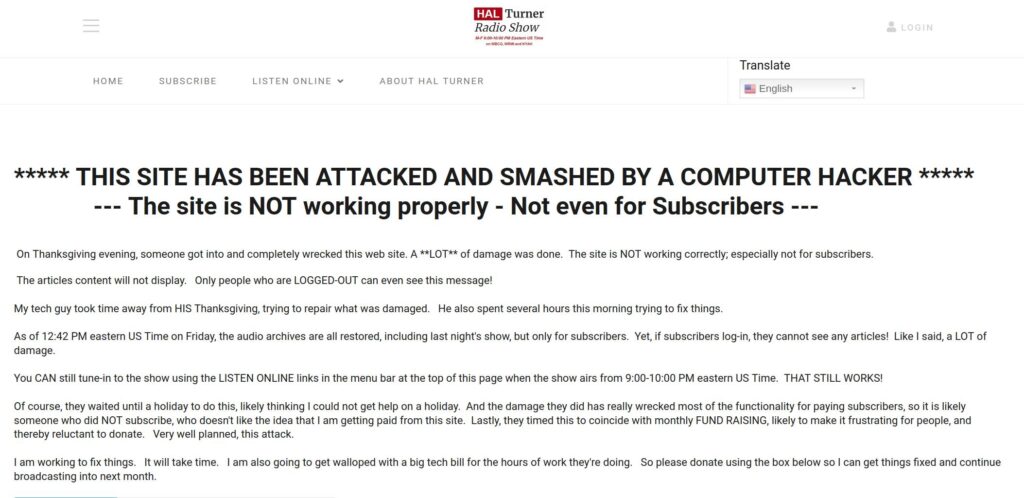
It was Ukraine Nazi’s…

What is Xi Jinping’s vision for China in the next five to ten years?
At the 20th National Congress of the Communist Party of China October 2022 in Beijing, Xi Jinping delivered a report to the congress on behalf of the 19th Central Committee.
The following is an extrapolation of the “key words” set in the report of the 20th National Congress of the Communist Party of China.
- Central Task: From now on, the central task of the Communist Party of China is to unite and lead the people of all ethnic groups in the country to build a great socialist modernized country in an all-round way, realize the second centenary goal, and comprehensively promote the great rejuvenation of the Chinese nation with Chinese-style modernization.
- Chinese Modernization: Chinese-style modernization is the socialist modernization led by the Communist Party of China, with not only the common characteristics of the modernization of all countries but also the Chinese characteristics based on its own national conditions.
- Two Steps Forward: To comprehensively build a modern and powerful socialist country, the overall strategic arrangement is divided into two periods: the basic socialist modernization realization from 2020 to 2035. Then, China will be built into a prosperous, democratic, civilized harmonious and beautiful modern socialist country from 2035 to the middle of this century. The next five years will be a critical period for the start of building a modern socialist country in an all-round way.
- First Priority: High-quality development is the primary task of building a modern socialist China in an all-round way. Development is the party’s top priority in governing and rejuvenating the country.
- Five Major Principles: On the way forward, all the Party members must firmly grasp the following major principles: adhere to and strengthen the overall leadership of the party, adhere to the path of socialism with Chinese characteristics, adhere to the people-centered development philosophy, persist in deepening reform and opening up, and persist in carrying forward the spirit of struggle.
- Focus of Efforts: Adhere to put the focus of economic development on the real economy, promote new industrialization, and accelerate the construction of a strong manufacturing country, a high-quality country, a world class top aerospace power, a world transportation leader, a network power, and a digital China.
- Better National Innovation Capacity: Adhere to the core position of innovation in the overall situation of the modernization drive, improve the new national system, strengthen the national strategic scientific and technological forces, improve the overall efficiency of the national innovation system, and form an open innovation ecosystem with global competitiveness.
- Complete People’s Democracy Process: The whole process of people’s democracy is the essential attribute of socialist democratic politics, and it is the broadest, most authentic and most effective democracy. It is necessary to improve the system of people being the masters of the country, expand the people’s orderly political participation, and ensure that the people implement democratic elections, democratic consultations, democratic decision-making, democratic management, and democratic supervision in accordance with the law.
- Rule by Law: Adhere to the joint advancement of law-based governance, law-based governance, and law-based administration, adhere to the integrated construction of a law-based country, law-based government, and law-based society, comprehensively promote scientific legislation, strict law enforcement, impartial justice, and law-abiding by all people, and comprehensively promote the rule of law in all aspects of the country’s work.
- Socialist Culture: Develop a national, scientific, and popular socialist culture that is oriented toward modernization, the world, and the future, stimulate the cultural innovation and creativity of the entire nation, and enhance the spiritual power to realize the great rejuvenation of the Chinese nation.
- Income Distribution System Improvement: It is necessary to improve the income distribution system, adhere to the principle of distribution according to work performance, and coexistence of multiple distribution methods, insist on more work, more pay, encourage getting rich by working hard, promote fair opportunities, increase the income of low-income earners, expand middle-income groups, standardize the order of income distribution, and regulate wealth accumulation mechanism for common prosperity.
- New Energy System: Base the development progress on national conditions, insist on seeking progress while maintaining stability, and gradually realize the new system. We must not be divorced from reality or too eager for success, engaging in sports-style “carbon reduction”, and then having to step on the emergency brake later on. Implement the carbon peaking action in a planned and step-by-step manner, further promote the energy revolution, strengthen the clean and efficient use of coal, accelerate the planning and construction of a new energy system, and actively participate in the global governance of climate change.
- Higher Level for Safer China: Build a higher level of safer China and ensure a new development pattern with a new security pattern. Resolutely safeguard the security of state power, system, and ideology, ensure the security of food, energy resources, and supply chains of important industrial chains, safeguard the legitimate rights and interests of Chinese citizens and legal persons overseas, and build a solid line of defense for national security.
- Strategic Deterrent Force System: All the Party members must comprehensively strengthen military training and preparations, improve the ability of people’s army in winning the wars, innovate military strategic guidance, develop people’s war strategies and tactics, build a strong strategic deterrent force system, increase the proportion of new-type combat forces in new domains, and further promote actual combat-oriented military training.
- Only Way Forward: The times call for all of us, and the people look forward to all of us. The whole party must keep in mind that upholding the overall leadership of the party is the only way to uphold and develop socialism with Chinese characteristics, that socialism with Chinese characteristics is the only way to realize the great rejuvenation of the Chinese nation, and that united struggle is the only way for the Chinese people to create great achievements in history. Implementing the new concept of development is the only way The only way for China to develop and grow in the new era, comprehensive and strict governance of the party is the only way for the party to maintain its vitality forever and take the new road to rush for the exam.
- Strategic Work: The whole party must take youth work as a strategic task, arm the youth with the party’s scientific theories, inspire the youth with the party’s original mission, and be the confidant of young friends, the enthusiastic person of youth work, and the guide of the young people.
There you have it the outline of the new 2023–2027 five-year development plan with Chinese characteristics in China.
This was a computerized search of the voluminous document for specific phrases and extrapolate the content from that search. A better summary might be this...-MM
So THIS is how they plan to screw these companies, from inside out
“Why do we need a woman Thor?”
Selected Points on Xi Jingping Vision and Goals for 2027:
- Food Security – Every Chinese to have 140% of their per capita needs of Rice, Pork, Soybeans, Corn, Fish Oil and Vegetables (Currently its 43–104% without Imports)
- Energy Security – China to have at least 2/3 of its Energy Locally without using Coal (Today it’s 37%)
- Home ownership – At least 66% Homes to be owned by First Owners who invest for a home and not as an investment (Today it’s 39%)
- Poverty – Having eliminated extreme poverty, China must wipe out Poverty to the bare minimum level by 2027 with no more than 5% Working Populace and Households being labeled as “Poor”
- Healthcare – Healthcare spending to rise from 6.15% GDP to 8.50% GDP by 2030 (Around $ 2.22 Trillion from $ 1.17 Trillion)
- Standard of Living – Chinese Per Capita Income to be $ 25,000 by 2035 and classified as a ‘Rich Country’ (Now it’s a High Income Country with GDP PCP of $ 13,409)
- Population Target – China to keep the present ratio of 1.79 working persons for 1 Old person up to 2025 and maintain a minimum of 1.5 by 2030
- Taiwan – Take steps conducive to peaceful reunification with Taiwan
Here’s the FULL TEXT (in English) of the Report.
Somehow, it keeps disappearing on Quora, and You-tube if you put the link there. Don’t know why.
The Illusion of Security
Just so people know, this was performed before September 11th. This guy was so brilliant and intuitive it’s scary.
Meatball Subs (Crock Pot)

Ingredients
- 1 lb lean ground beef
- 1⁄2 cup dry breadcrumbs
- 2 tablespoons finely chopped onions or 1/4-1/2 teaspoon onion powder
- 1 teaspoon salt
- 1⁄2 teaspoon Worcestershire sauce
- 1 egg
- 1 tablespoon parmesan cheese, grated
- 1 (32 ounce) jar spaghetti sauce
- 6 -8 sub rolls (hoagie rolls) or 6 -8 hot dog buns
- mozzarella cheese (sliced or shredded)
Directions
- Place first seven ingredients in large bowl. Mix thoroughly with your hands just until combined. (I wear food prep gloves.) Shape into approximately 30 1-inch balls.
- Bake in an ungreased oblong pan (13x9x2) in a 400°F oven until light brown, 20-25 minutes. OR: microwave meatballs in an ungreased baking dish, 6 minutes on High, turning once. OR: cook over medium heat in frying pan, turning occasionally, until brown, about 20 minutes.
- Place cooked meatballs and spaghetti sauce in crock pot. Cook on low for about 2 hours. If you cook longer, stir every hour or so.
- Place meatballs and sauce in buns/rolls and top with mozzarella cheese.
- Note, I microwave the meatballs to cook them.
- (A friend places the raw meatballs & sauce in the crock-pot and cooks them for 8+ hours on low, but I have never tried this.).

Would Taiwan destroy their microchip and hardware factories if China invaded in order to stop the Chinese government obtaining their resources?
You think Taiwanese Chinese are fools?
Taiwanese people mostly feels like Chinese and most will protect their chip factories intact to continue profiting and continue selling world wide be it under government A or B.
By asking this question shows that you hardly understand that 90% of Chinese wanted unification with China eventually, 50% of them wanted this unification immediately from the balance 10%, the majority don’t want war. Only 1% made up of those CIA operatives, those traitors, some ancestors of Japanese world war 2 murderers and the corrupt regime wants to fight.
The last thing they will do is to destroy their business for your sake.
Eulogy from an influencer
Below is an eulogy that I wrote, both for my own peace and acceptance (it helps to write) and to remind us of our memories. It isn’t quite finished yet, but close enough. I have shared this with many of my friends whom I entertain with stories from Estonia.
Recently, you included in an article about a cat that died and included a picture of said beloved cat with toys and important things to help send the cat away to the afterlife. It was a touching reminder of what we did, including his favorite playthings, a pillow under his head, wrapped in a blanket to keep warm and with his favorite toys that he frequently played with. Even now we (until everything was covered with snow) still found reminders of his laying around the yard and house. Tears still well up and even writing these few lines are difficult.
Life is a circle. We don’t know how big it is nor how fast it travels, but it has a definite beginning and end. Along the way, other circles intersect with your own, either tangently, intersecting for a time (sharing the same area) or fully within, and all have an impact . Anyway, something like that, and the concept needs to be written a bit clearer.
Feel free to use and share as you see fit.
Thank you for your words, inspiration, and please keep on doing what you are doing (although less of the geopolitical stuff).
Eulogy of Mutt. For those who are linguistically challenged, Mutt is pronounced like moot or something like what a cow says with a T on the end. The U does not sound like the U in mud. In January, we brought home our first border collie puppy (named Mutt) to grow into a fine dog and then help with our sheep flock. We are not sure if he chose us or us him, but we somehow singled him out when he still had not opened his eyes. Perhaps he also just knew but didn’t say anything. I put him in my coat pocket and walked the 2 km home (once he was 8 weeks old). That first night, he wined and cried from being separated from all his brothers (8 brothers and 1 sister), we thought maybe to take him back. The only way to soothe him was to calmly stroke him, all night. Subsequent nights were better. Happy times followed by some frustration – where did the shoes and boots go – under the swing again. If things disappeared we soon found out where to look. He got along splendidly with our guard dog, Pitsu, who, at their first introduction, wasn’t sure if he was a threat or a treat. Every day, twice a day, since when he was able to follow me to the sheep, he came to check the sheep with me while I fed Pitsu. He began to figure out how to help move our sheep. In his final week, things really clicked as he did a very commendable job helping to pen up the lambs for pickup by the meat truck. Otto really liked Mutt when Mutt was small ball of black fur, and later allowed Mutt to, ahem, sleep on his bed all curled up. Good times don’t last and change is inevitable. The other night, a few days before Halloween, he was hit by a car (we did not know this at the time; we also have very little traffic, and even less at night), and he did not come to the house when we called. The kids searched for him and found him standing quietly and knew something was wrong. An examination suggested that he had a broken rear leg bone. We called our neighbor, Ants, at 10:30 that evening, and woke him and his family and asked him to give Mutt an examination. He is in the orthopedic veterinary surgeon business at the University Animal Clinic. He administered pain killing drugs and started an IV for fluids. He stated that yes there is very likely a fracture and the best thing to do would be to go the emergency veterinary clinic since they specialize in such cases and are best able to provide care. We drove to Tartu, and arrived about 2 am at the clinic, dropped off the dog and turned around and headed for home. There wasn’t anything we could do and he was in good caring loving hands. Later that morning we talked with the clinic after they had done an evaluation and made x-rays. There were multiple hip/pelvis fractures on one side, and the other hip was dislocated. These fractures can be repaired. Concern came from some of their brood analysis and possible internal injuries especially to the lungs. At the moment he was stable and sedated. They also said they would call with any important updates, but currently no news is good news. Late afternoon, we got the unexpected phone call from the vet and headed back to Tartu to bring home our dear Mutt for our final goodbyes and burial. They said he was stable and breathing fine and then just stopped. There was nothing they could do. It happens to us all anyway I suppose. We will begin rebuilding tomorrow someday as soon as we (I) all have recovered. We remember many things that Mutt has done. Sheep chasing him instead of him chasing the sheep when still little. His first bath in the sauna after finding something delicious stinky he rolled in. Playing with the old basketball or 12 inch section of PVC pipe first thing in the morning. His first car ride in which he was terrified to go on, and then it was hard to stop him from jumping in any vehicle for a ride. Mutt stalking down the chickens. Mutt investigating the bees, and then suddenly not. His discovery of electric fences. Play dates with some of his kin. His intense tunnel vision stare when sheep (or chickens) are around. Digging up the first replanted peony by the time the 5th replanted peony was transplanted. Sneaking onto the couch or bed for a nap when his knows he isn’t supposed to be there. His muddy paw prints all over the house (how we would welcome those back). His first training session in Hellenurme. Along our short and unexpected journey, there were many people who offered comfort, compassion, hugs, words, and just support which is all needed and very much appreciated and all helps in its own way, especially the veterinary staff and our neighbors. Mutt was an innocent soul taken too soon. I’d also like to remind all to do the little things; smile, say hello, lend a small helping hand to strangers and those you know – little things grow into bigger things. Take the time to express how you feel to your children, spouse, neighbors, friends, and others – there is no better time than now, and now ain’t a coming back. Be good to your animals – the dogs, cats, birds, or goldfish. Give your dog a hug and cat a scratch, and I am not sure about the birds or goldfish but be good to them. Be that person to lend a hand or a word or spare change without any expectation. For some of us, tomorrow is too late and yesterday is not today, as today passes idly by. Don’t waste today and savor all in the moment. Be that person to evoke big changes by the little things you can do. Where have you gone, chasing the white clouds in the sky.
Beautiful.
It is noticeable that China is not reacting to USA trade aggression with anything like the urgency that perhaps the US was expecting, is there anything in the Art of War that might indicate China’s strategy here?
The most important lesson in the ‘Art of War’ is to know your enemy. The Chinese government is staffed with people who have intimate first hand knowledge of the USA and the Chinese President Xi himself has spent time in the US living with an American family for awhile in the mid-west.
The US on the other hand has plenty of pseudo China expert surrounding the President. Those pseudo China experts had never spent much time or even none at all in China or have they studied Chinese.
So in fact the US has no one who knows much about China.
They have no idea how Chinese do business or how they will react to certain situation like this one right now.
Those pseudo experts thought that China would give in to their unreasonable demands and capitulate immediately. They were so surprised by China’s inaction that they actually voiced their surprise and admitted they did not know what to do, just complaining that China refused to make any decision.
China’s strategy is very simple.
Since the Trade war is not hurting China very much so China would just wait for the US to make more errors on their own. China has time to wait. The majority of its people is behind the Government whatever the Government decides.
I think if one really study the ‘Art of War’, one would know what China would understand China’s strategy.
But studying the translated book of ‘Art of War’ is not the same as studying the real text. One has to know Chinese well enough to extract the nuances from the writing.
New Fudan Report: US-China Chip War
From HERE
Fudan Development Institute, one of China’s most highly rated think tanks, has just published a new study entitled “From ‘Prevention’ to ‘Containment’: A Report on the Securitisation of the US’s Semiconductor Industry Policy”. Its authors are Shen Yi (沈逸) and Mo Fei (莫非). The former is a controversial professor of international politics and the director of the Centre for International Cyberspace Governance at Fudan University. With a following of almost two million on Weibo as well as regular videos and opinion pieces discussing international relations, he has become a well-known public intellectual in China. Shen has previously written about his experience of being interrogated by the FBI and having his US visa revoked back in 2018. The second author, Mo Fei, is a PhD candidate at Fudan University’s School of International Relations and Public Affairs and a research assistant at the aforementioned Centre for International Cyberspace Governance.
This report appears to have been written, or at least completed, in September, in other words, prior to the US’s most recent high-tech export controls. The authors, however, were aware that “the Biden administration plans to further strengthen export controls on China in the areas of artificial intelligence and chip manufacturing, and that it was considering establishing a system within the US government that would give it the power to directly block US entities from investing in China and require information disclosure.” The following summary and excerpts should therefore be read keeping this background in mind.
On a side note, I may occasionally post special editions such as this one in addition to Sinification’s weekly format if and when I feel that a particular study is noteworthy, topical and too long to share as a thread on Twitter.
Key arguments from this report:
- The US is making a strategic mistake in channelling most of its energy into outdoing China in the tech sector. Semiconductors only constitute a small part of the US-China rivalry.
- The US’s chip manufacturing capacity lags far behind that of East Asia. The CHIPS Act is unlikely to provide enough funding and incentives to change this.
- US allies will not be willing to sacrifice their own interests for the sake of America’s.
- China has the financial firepower, unrivalled capacity for government-industry coordination and absolute determination to accelerate the development of its chip industry, come what may.
On the drivers and dynamics of the US-China chip war:
“China’s fundamental national strategy is to strengthen its national power, improve the standard of living of its citizens and enhance its international status through peaceful economic development. The US’s strategy towards China is to ‘lock up’ China’s rise, curtail its international influence and increase its dependence on the US in the international system. Therefore, the essence of the strategic competition between the US and China is a struggle between economic development and domestic governance rather than a traditional hegemonic or military-security struggle.”
“The US, however, has rather simplistically focused on the nature of the strategic competition between the US and China as being a ‘technological battle’, and then even more simplistically determined that a series of [tech-related] policies will be able to successfully block the strategic challenge posed by China in a relatively short period of time and at a relatively low cost.”
“The US has [now] put anti-China national security concerns ahead of such economic interests as ‘cost’, ‘efficiency’ and ‘market’.”
“Advanced semiconductors have become an outlet for the US to release its security-related anxieties about China and have been turned into a symbol … demonstrating the US’s superior strength and its gradually winning in the context of US-China rivalry. At the same time, in the absence of one single effective ‘tool’ to contain China’s technological rise and as one of the very few holds the US [still] has in the economic sphere that can effectively handicap China, any action that can widen the gap between China and the US in advanced semiconductor technology will have the psychological effect of ‘easing the anxiety’ and ‘increasing the smugness’ of US policymakers. Each [US] crackdown on China’s advanced semiconductor technology will release the US’s security-related anxiety about China in stages. [But] when new security-related anxieties reach a certain level, it will once again drive the US to take further restrictive measures against [the development of] China’s advanced semiconductor technology.”
“At the [current] stage of the strategic stalemate between the US and China, the US can only add to the semiconductor technology embargo compulsively and frequently to demonstrate that it still has considerable coercive power and strategic advantages over China.”
“But the fact is that advanced semiconductors only constitute a small part of the strategic competition between the US and China.”
On the difficulty for the US to rebuild a chip manufacturing base at home, gain the backing of its allies and shut out China:
“Global economic integration, the formation and consolidation of global supply chains, and China’s deep roots in the global economic system make it almost impossible for the US to replicate its Cold War strategy against the Soviet Union in its strategic competition with China.”
“History repeats itself but never in exactly the same way. The United States today does not have the same strategic capabilities as it did thirty years ago, and China is now already highly integrated into both the new international division of labour and the world’s science and innovation cycle. Even in the area of semiconductors, where the US is in a position of power and China is at a disadvantage, the US is no longer in a position to [simply] remove China from the supply chain of advanced semiconductors. The inherent vulnerability of the Biden administration’s chip strategy leaves room for China’s semiconductor industry to break out of the US’s siege. More specifically:”
- “The Biden administration’s semiconductor strategy runs counter to the global semiconductor industry’s development pattern and lacks an adequate domestic semiconductor manufacturing base to support it.”“US semiconductor manufacturing capabilities lag far behind those of East Asian countries. [This is explained by] the wave of de-industrialisation that began in the late 20th century in the US, coupled with the fact that most American IC companies have opted for a ‘Fabless’ operating model, focusing on design and outsourcing manufacturing.”“The US’s heavy reliance on East Asian semiconductor production capacity exacerbates the risk of disruption to the US chip supply chain, while also increasing the US’s vulnerability in the context of its strategic competition with China.”“Now, for national security and geostrategic reasons, the US is planning to bring semiconductor manufacturing back to its shores … However, such a systemic change will be very difficult to achieve with just a single ‘chip bill’.”“The US’s current approach has seen it use mainly federal funding to invest domestically in high-tech R&D … to train new talent and to attract foreign firms to set up factories in the US. However, … if the US wants to restructure the [current] layout of the global semiconductor industry, US$50+ billion from the federal government will clearly not be enough to solve this issue.”“In September 2022, the Center for a New American Security released [a report] … which stated that the US CHIPS Act is designed to close the cost gap between producing chips in the US versus in East Asia, but that current financial support and related incentives were still far from sufficient to close the cost gap across the industry.”“The actual effectiveness of the CHIPS Act may differ quite significantly from the optimistic estimates (in favour of the US) that are now being made in a large number of studies; one cannot exclude a scenario in which the buzz is followed by business as usual.“Frankly speaking, although we still need to wait for [these measures] to be put into practice … it is arguably the ‘pull’ by the end customer that will prove more important than the ‘push’ by the US government’s industrial policies. If the end-consumer market proves unwilling to pay a premium [for these high-tech products] … the Biden government’s semiconductor strategy … will not be able to [fully] restructure the [current] layout of the global semiconductor industry.”
- “The US’s influence within its chip alliances is not sufficient to convince its allies to follow the Biden administration’s semiconductor strategy on the premise of ‘America First’ and ‘each country has to pay its own way [i.e. with no help from the US]’.”“[In reality,] the core of the US’s semiconductor strategy, is, on the one hand, to siphon off resources from Taiwan, Japan, South Korea, the Netherlands and other relevant semiconductor companies to make up for the technological shortcomings in its own semiconductor manufacturing sector. On the other, to convince its allies and partners, using its position of power in the high-tech world, to stop semiconductor technology deals and manufacturing cooperation with China.”“The Biden administration is [effectively] strengthening itself at the expense of others … thus increasing the vulnerability of the Biden administration’s semiconductor strategy. In other words, US allies and partners have their own semiconductor strategies and are not willing to sacrifice their own interests in order to serve the US’s semiconductor strategy.”“[For example,] South Korea cannot [simply] decouple from China, just for the sake of cooperating with Washington in building up the US’s [new] supply chain, without taking into account the fact that China is South Korea’s largest semiconductor market … South Korea is ambivalent about the ‘CHIP 4’ alliance currently being assembled by the US.”“Taiwan, on the other hand, still has illusions about [the effectiveness of] its ‘Silicon Shield’ and does not want the US semiconductor industry to develop in the direction of self-sufficiency for national security reasons.”“There are deep-rooted conflicting currents in the underlying logic of Taiwan’s semiconductor strategy with the US. Politically, Taiwan is investing in US factories to curry favour with the US on geopolitical issues. Economically [however], Taiwan’s semiconductor industry … does not view the US ‘chip strategy’ favourably.”“In addition to [the Netherland’s] ASML, the Biden administration has also tried to pressure Nikon, a Japanese DUV equipment manufacturer, to stop exporting such equipment to China, but the Japanese have also refused. This shows that, when it comes to the technological embargo imposed on China, although the ‘public-private’ alliance formed by the US will cooperate with the US’s strategy, there is a limit to such cooperation. This can be explained by two factors: the pull of the Chinese market and a concern for US technological hegemony [among its allies].”
On the US’s tech crackdown on China and the the medium-to-long term prospects for both the US and China:
“The specific technical details involved in the semiconductor industry are complex enough to ensure that [only] a small group of elite politicians in Washington can monopolise the content and future direction of these discussions, thereby making it easier to gain indulgence and support for their contrarian actions both at home and abroad.”
“Take the latest US chip sanctions against China on 1 September as an example … The ban presents a remarkable internal paradox. It was initially intended to create additional barriers to the development of China’s high-tech industry. However, it may well end up having the opposite effect. Ironically, in the medium to long term, US pressure is set to ‘force’ China’s high-tech industry to develop a more solid industrial base as well as [its own] core technologies. Objectively speaking and from the US’s perspective, this will lead to [the emergence of] a more challenging, comprehensive, and thus more-difficult-to-contain, powerful adversary.”
“In the short term, US tech-related policies targeting China will indeed create a window of opportunity. That is to say, a window during which China will be seeking to fix the adverse consequences caused by the US’s technology crackdown. For the US, this window will mean that the US is given more time to develop itself in a number of key and emerging technologies, including advanced manufacturing and artificial intelligence, so as to gain the upper hand over China … But such a turn of events is far from being a given. In other words, in addition to restricting technology exports to China, the US government will also need to implement effective domestic policies to support and guide its efforts in these areas. However, if we look at the US’s performance on related issues since the 1980s, the picture is not particularly promising. Of course, the recently passed CHIPS Act provides some room for imagination. However, … in terms of the type of governance capacity required to steer and organise such large-scale strategic industries, the US government is not currently in a position to provide a convincing answer to observers.”
“In the short term, the most immediate and tangible effects of the Biden administration’s tech-crackdown on China will be: (i) to create real obstacles for the development of related industries in China; (ii) to generate a public opinion wave of pro-US and anti-China rhetoric; and (iii) to use ‘hurting the US’s strategic rival’ as political leverage during the upcoming US mid-term elections and the presidential elections two years later.”
“In terms of [economic] weight, the US economy is still the largest in the world, but its lead over the second-placed has narrowed to the point where it is within sight and able to be overtaken. The US still has an overall advantage in terms of cutting-edge technology, but this advantage does not ensure that its use will simply lead to the continued development of its strengths and consolidation of its superiority. It will [probably] not be possible for the US to maintain its overwhelming technological dominance over the rest of the world. In other words, there is a lack of certainty surrounding the US’s ability to make further technological breakthroughs. Its traditional strengths are shrinking or even [already] lost, and its toolbox lacks an obvious ‘magic bullet’ like the US’s containment strategy during the Cold War, which could simply ‘solve the problem once and for all’ vis-à-vis the US’s main strategic rival. In fact, the anxiety that is spreading in Washington’s policy-making circles is constantly forcing the US government to look for, and subsequently try out, any type of tool that can produce short-term results. Thus, for policy makers at least, it is a way of justifying domestically that ‘something has already been done’ and avoiding simply looking on [helplessly] at the gradual erosion of the US’s hegemonic powers.”
“The specific condition [to the US’s success] is that the target of such a weapon [export controls] must have a sufficiently weak political will to abandon its intention to develop the industry in question immediately after the US’s strike … [However,] China has both the will and an unmatched capacity for industrial policymaking to drive and guide the development of its own alternative technologies [替代性能力]. Chinese companies and industries have long since begun the production of related products but are [currently] in the uncomfortable position of being constrained by the superior and more mature products of US companies. The subtlety of US bans is that it is the US government, rather than the Chinese government, that has helped these companies to achieve the effective exclusion of their competitors from the [Chinese] market [i.e. this will, according to the authors, allow Chinese companies, in the medium-to-long term, to grow even faster and invest even more in R&D].”
“In terms of China’s [overall] development, the development of its technologies, the development of its industries as well as a number of other dimensions, this [i.e. pressures from the US/West] does not really constitute a [catastrophic] threat akin to ‘the sky is falling’. Objectively speaking, the discomfort caused by the bans will be the best possible impetus to stimulate and push forward the upgrading of alternative industries and technological capabilities [in China]. China’s [past] experience shows that once this short-term discomfort has been overcome and alternative capabilities and industries have been developed, what will follow is a complete rewriting of the rules of the game by China by virtue of the country’s superior production capacity. The potential outcomes of such a scenario are truly exciting.”
“For [Chinese] policy analysts [政策观察者], it is important to maintain a greater degree of composure, resilience and patience when dealing with US policy decisions, and to analyse more systematically the [potential] discrepancies between policy intentions, policy content and, ultimately, policy effectiveness. For the Chinese government, the more pressing issue is to build [more] effective and refined countermeasures against US [policies], while maintaining the trend of opening up to the outside world and encouraging globalisation, so that the Chinese market and the benefits gained by US companies in China can be used more fully as leverage and, when necessary, a strategic weapon in China’s competition with the US. This is a crucial and necessary part of expanding and improving [our] capabilities in the context of China’s rise.”
Zhu hao (祝好),
Thomas
GEORGE CARLIN on why America sucks
George is 100% correct.
I said this…
[3] Local Police Then you have one more stop, you go to the police station and register locally. Not to worry though, they have all your data. You can even smoke at the police counter! The local police do this because “it’s so hot outside”. Isn’t China great!
It was on a Quora Q&A found HERE.
Patrick Koh commented on your answer to: “How convenient it is for foreigners to live in China?”
Great.
"Smoke in a police station in China!!!! That’s awful!!"
My mobile was stolen at Guilin train station. When I hit my destination, i(it took me) 5 mins to (go to) a phone MALL, then (a visit to) Unicom next door to get a replacement SIM (passport needed).
By evening, Guilin Police called me – found my phone from a theft syndicate!
I rushed there by train the next morning.
AND yes, they let me smoke in the police station because…
- CCTVs everywhere outside.
- (‘hot outside’ too.
Didnt bother me that I have 3 VPNs on my phone.
Then they even drove me back to the train station in the police car.
AND
They even let me smoke in the POLICE CAR because I was late for the train LOL.
And I don’t even look macho like you.
Making That Thing You Do!(1996)
My band frequently performed in a Memphis club on Beale Street. The rules are strict there, conforming to a blues and R&B format. One night we got so bored we whipped out “That Thing You Do” and the place just exploded. The GM told us to play songs we wanted to. Thank you Tom Hanks!
What are some bizarre things we will only see in China?
I have seen a few lovely, bizarre things in China during my years there. Here my favourites:

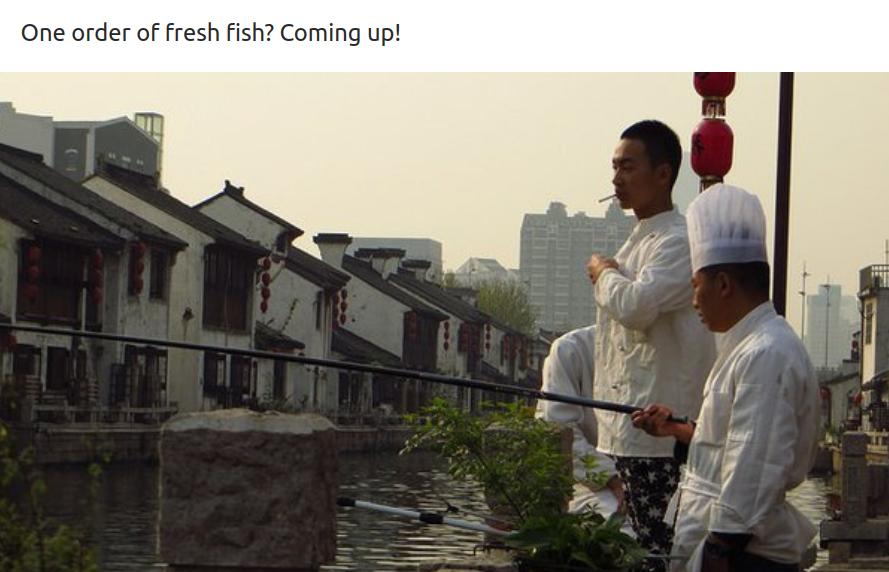
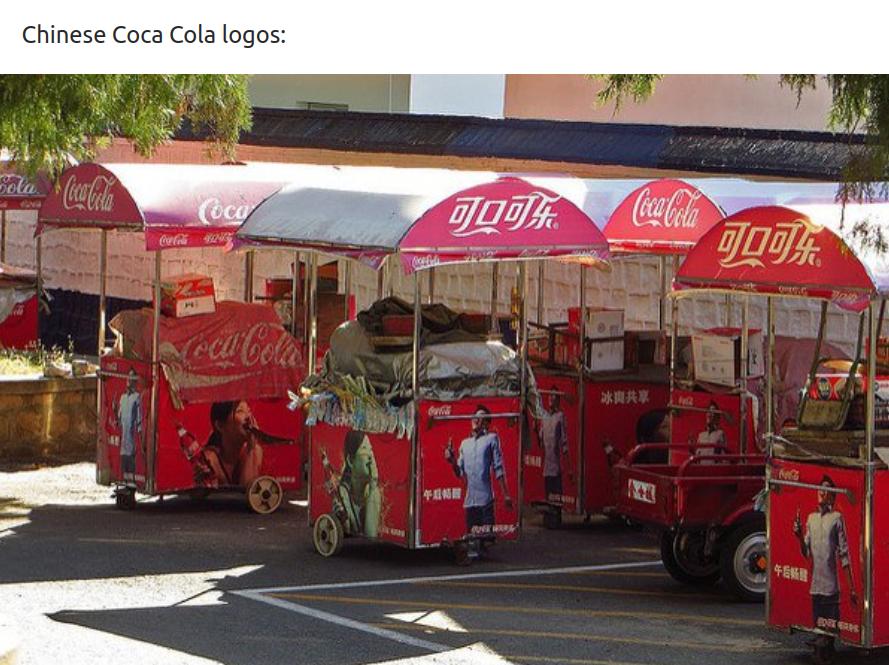


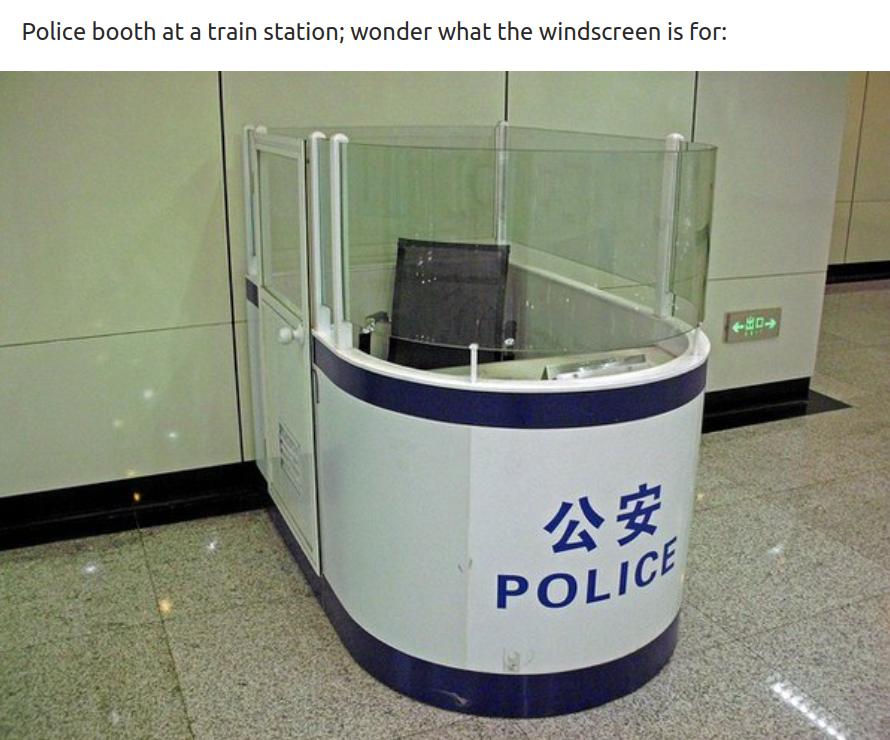

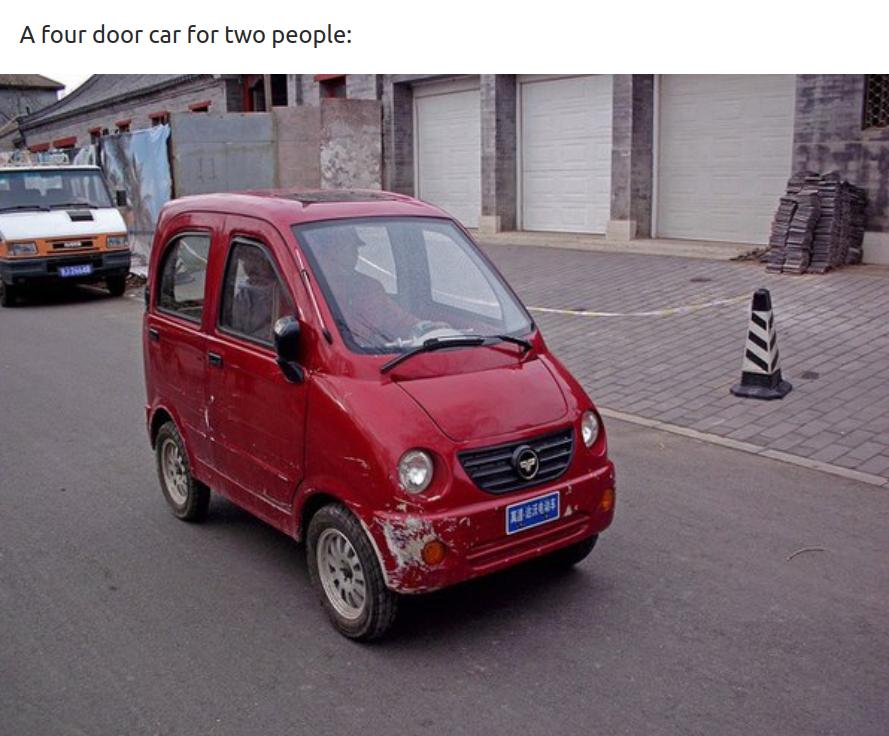


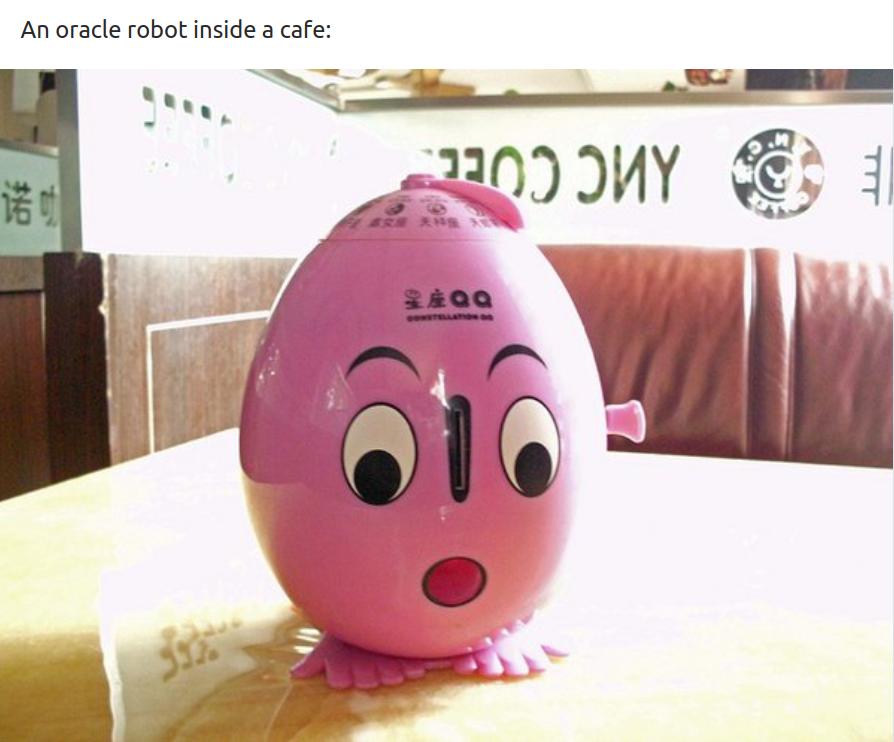
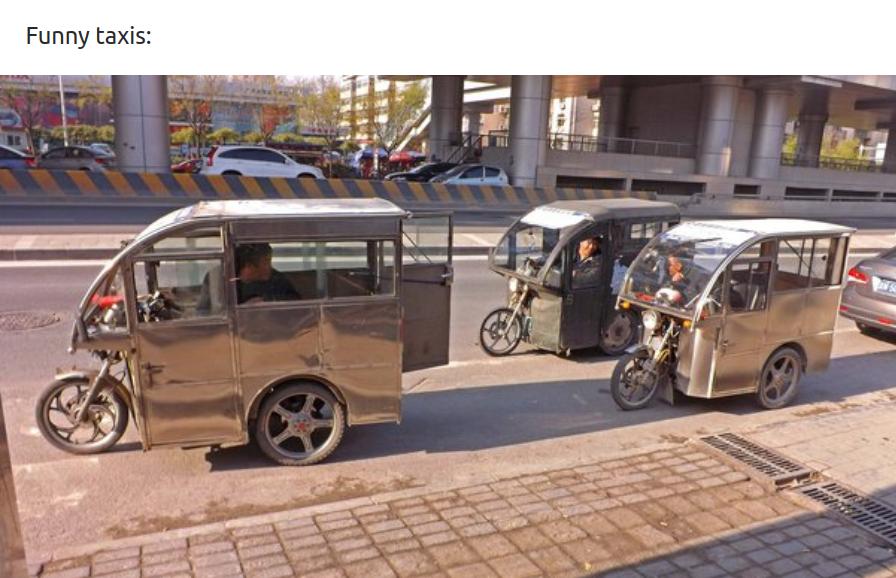


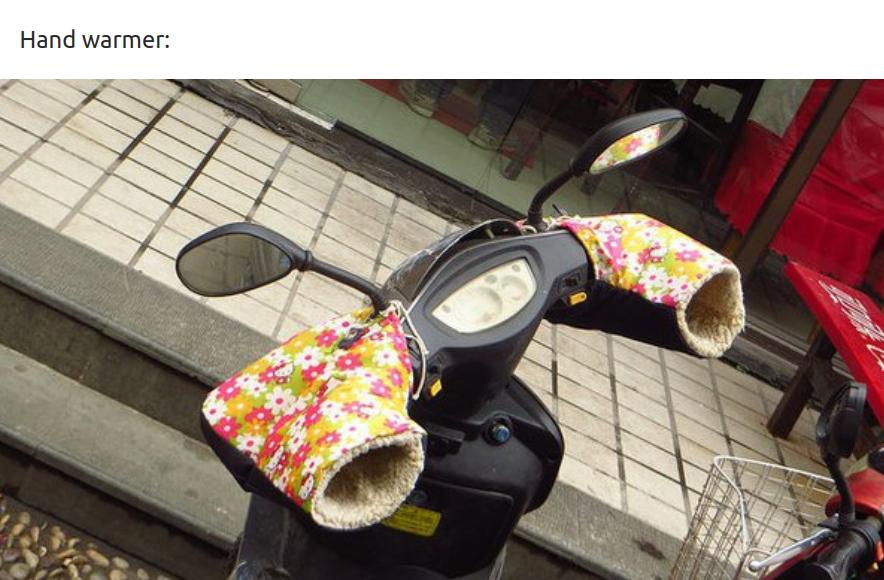
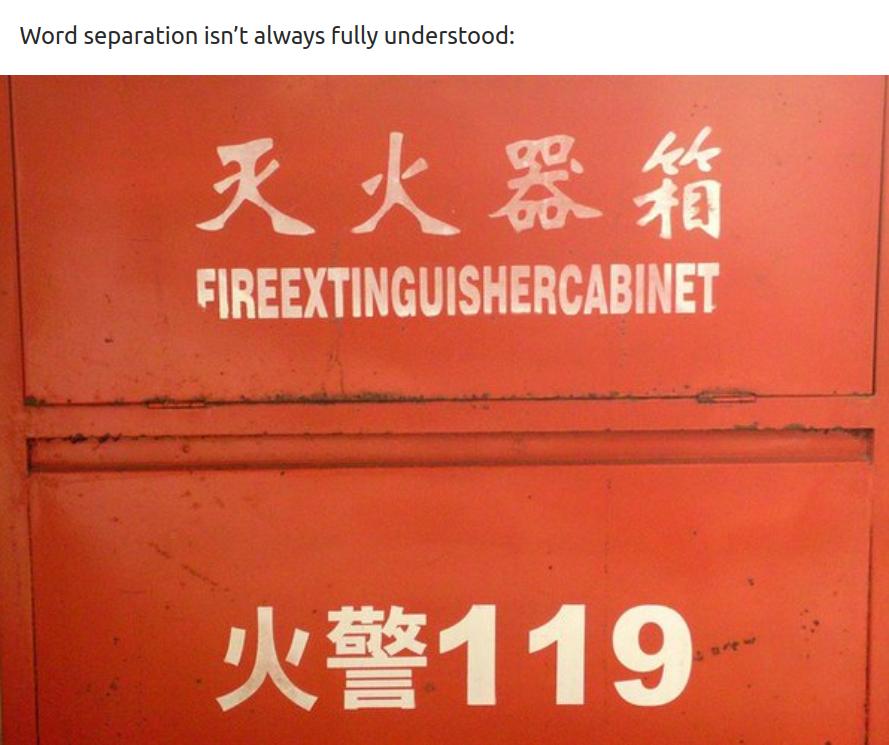

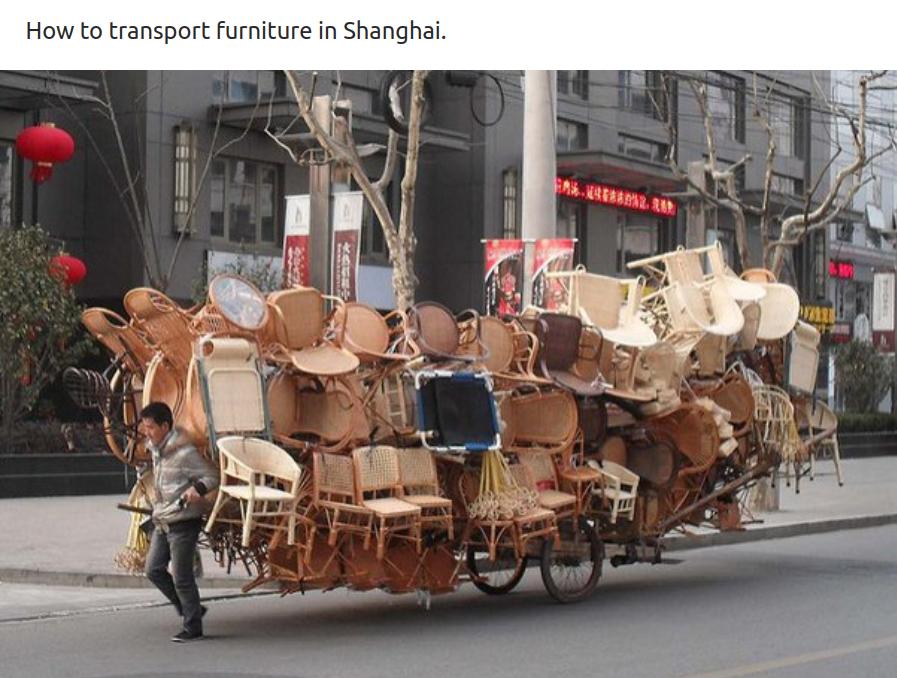

Creamy Chicken and Wild Rice Soup (Crock Pot)
“From Betty Crocker — Slow Cooker recipes. NOTE: Posted as written, however, I cook the rice separately usually the night before if it is a work day, refrigerate the rice and then add it during the last 15-20 minutes to avoid mushy rice!”

Ingredients
- 1 lb boneless skinless chicken thighs, cut into 1-inch pieces (5 thighs)
- 1⁄2 cup wild rice, uncooked
- 1⁄4 cup onion, chopped (fresh or frozen is fine)
- 2 (10 3/4 ounce) cans condensed cream of potato soup
- 1 (14 ounce) can chicken broth
- 1⁄4 teaspoon garlic powder
- 2 cups frozen sliced carrots
- 1 cup half-and-half
Directions
- Place chicken in 3 1/2- to 4-quart slow cooker. In large bowl, mix wild rice, onions, soup, broth and carrots; pour over chicken.
- Cover; cook on Low heat setting 7 to 8 hours.
- Stir in half-and-half. Increase heat setting to High.
- Cover; cook 15 to 30 minutes longer or until hot.

Is there anyone who can tell Biden that we cannot survive supporting never ending rivers of millions flocking here at this point?
I’m a Brit and weirdly this is a very pertinent question.
A few years ago 51% of our country voted to leave the European Union.
Being a member of the EU gave us the right to work, live and travel to 27 other countries.
When Brexit went live 27 countries lost their right to come and live, work and study here in the U.K.
the results so far:
we have had crops rotting in fields due to a drastic lack of migrant workers.
restaurant prices have gone through the roof as they compete to try and recruit and retain staff.
want an au-pair as a cheap nanny? Ha ha ha ha ha. Nope.
the most respected focal examiner in the country has looked at our current figures and has confirmed that the U.K.’s prospects are roughly 15% lower than they would have been had we remained in Europe.
inflation has jumped from 1.25% to 10.1% (though that is in part due to war in Ukraine and Liz truss single handedly buggering up our economy)
We have lost vast numbers of:
- doctors
- nurses
- teachers
- carers
- dentists
- academics
- researchers
- teachers
- social workers
I’ve had more than 20 friends return to Europe all of who were higher rate tax payers.
immigration benefits a country.
we are paying the price.
Why are so many countries unfriendly to China?
So many countries?
If you and your 6 racist friends hate China it does not make many!
My count is that some people in the US, their slave vassal states, their fellow native slaughters, their fellow colonial powers and some tiny fascist states in Eastern Europe dislike China.
In nations it is a mere a dozen nation out of 197 nations in the world. Barely 5%.
In population barely 1% of the world have a negative view of China. Only the older, more conservative, less read, less, less educated, less travelled xenophobic people in those place dislike China!
The vast majority of the population in the world has a very good opinion of China and the Chinese people.
The Wonders, “That Thing You Do”
Quite possibly the most convincing fake band ever, and they look like they’re having a blast. Any of the songs in that movie could have gotten serious radio play in 1964.
Drone Footage of WA in Australia
"Some drone footage of a place we are staying at shot by a good friend of mine, John Daws from vehementdigitalconcepts.com."
Worth a look. A nice vacation to a never-never land “down under”.


